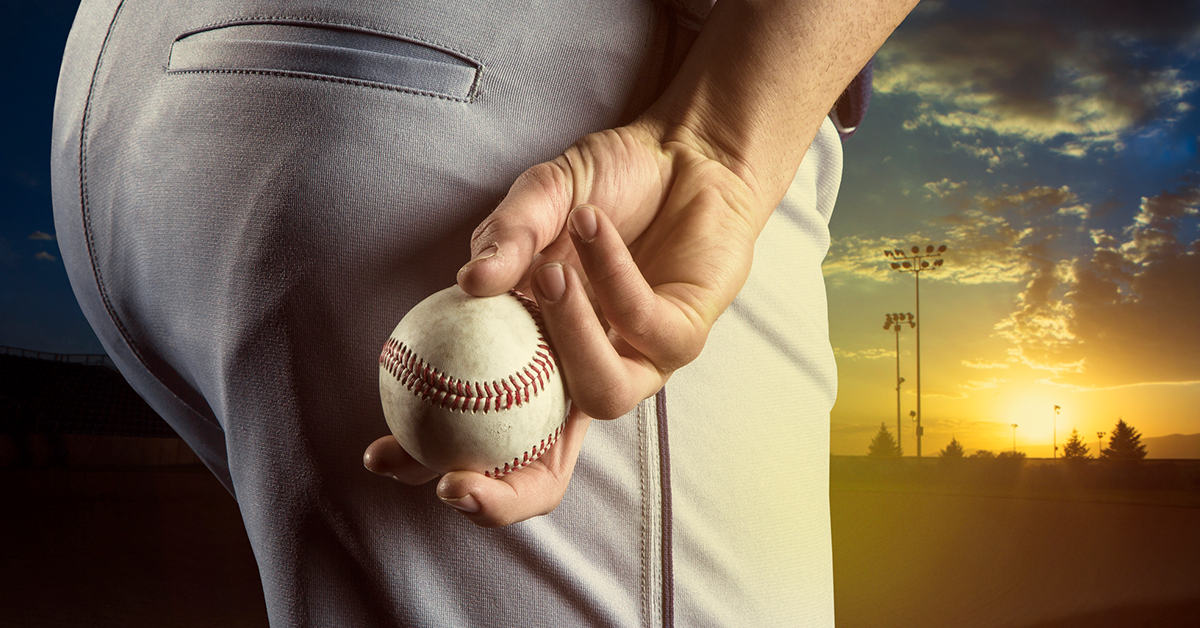Make sure you catch the first of our articles on baseball injuries. This one is focused on pitchers:

Baseball Injuries Part 1: Pitchers
Baseball is one of the most popular sports in America. But whether you're playing recreationally, in your backyard, or on a professional team, you may be risking certain injuries. When it comes to baseball pitchers, the most common injuries are often due to overuse.
Overuse Injuries
Overuse injuries occur when an action is repeated that puts pressure on tissue, muscles or joints. If the body is not allowed to rest or heal properly, it can result in pain for the player now and later in life. If left untreated, this can become an issue like tendonitis, where the tendons become inflamed. In baseball, this damage is especially likely to occur in the shoulder, elbow, and wrist, because players put the most stress to those areas when they throw.
Tendonitis
Tendonitis occurs when the tendons around a joint become irritated from overuse of that joint. Symptoms vary depending on the affected joints, but usually include inflammation, pain, and limited range of motion. Pitchers are especially prone to elbow and rotator cuff tendonitis, as repetitive throwing can put a great deal of stress on the tendons on those joints.
Rotator Cuff Injury
Rotator cuff injuries are very painful shoulder conditions that can be common in baseball pitchers. This condition is caused by repetitive stress on the rotator cuff tendons, which play a large part in your ability to lift and rotate your arm. Symptoms include arm weakness or pain when lifting or rotating the arm, pain when resting on the affected shoulder, and a crackling sensation in the shoulder when performing certain movements. Pain from rotator cuff damage increases as time goes on.
Medial Ulnar Collateral Ligament
A medial ulnar collateral ligament, or MUCL, injury is an overuse injury in which a ligament in the elbow is sprained or torn. One of the most common causes of MUCL damage is repetitive motion from throwing. So while all players may risk MUCL injuries, this injury is most often seen in pitchers.
If you watch news about baseball, you may hear about Tommy John surgery. Tommy John surgery is another name for Medial Ulnar Collateral Ligament Reconstruction, which is a procedure used to treat torn MUCLs. The procedure is named after the first person it was performed on, a professional baseball pitcher named Tommy John.
Medial Epicondylitis
You may have heard about golfer's elbow, but did you know the same condition is also called pitcher's elbow and baseball elbow? The actual name of the condition is medial epicondylitis, and it is caused by overuse of the forearm's tendons and muscles. This can be caused by repetitive motions, in particular forceful wrist and finger motions, like clenching your fingers. Throwing, hitting, or lifting incorrectly can also lead to medial epicondylitis, as well as too little stretching before activities. This overuse gradually deteriorates the common flexor tendon, which attaches to the media epicondyle on the inner side of the elbow. Often conservative treatments can benefit this condition.
How do you avoid these injuries?
Overuse is one of the most common causes of sports injuries, but it's also one of the most preventable. Regular stretching and rest are some of the easiest ways to avoid overuse injuries in baseball. Regular rest to allow the body to heal properly is a very important part of preventing injuries that could end your ability to play baseball.
At the professional level, effort is made to help prevent overuse injuries by having players take required amounts of rest. Major League Baseball pitchers have 4-5 days of rest between days that they throw. It's important to remember that stress on your body adds up, so players may avoid serious injuries by stretching, resting, and staying hydrated.
Getting Back Out There
Treatment varies depending on the severity of the injury. If conservative treatment like rest, ice, compression, and elevation, or RICE, and a set period of physical therapy do not treat the problem, your doctor may consider surgery, depending on the injury's severity. The procedure performed depends on the location and severity of the injury. Regardless of what procedure is performed, rehabilitation will require physical therapy. Dedication to stretching and strengthening exercises may help to heal the injury properly and to avoid another strain in the future.
